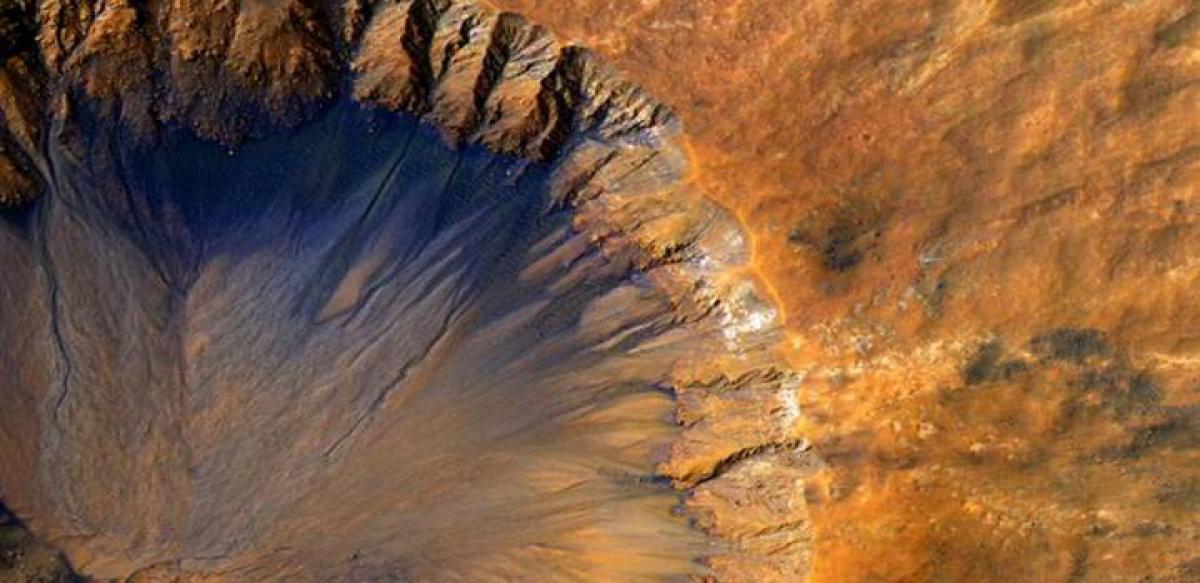Can gypsum formation tell about water on Mars?

A new explanation of how gypsum forms may change the way we process this important building material, as well as allowing us to interpret past water availability on other planets such as Mars. The formation of gypsum, from concentrated aqueous solutions of calcium sulphate, was so far thought to be a simple, single-step process.
London: A new explanation of how gypsum forms may change the way we process this important building material, as well as allowing us to interpret past water availability on other planets such as Mars. The formation of gypsum, from concentrated aqueous solutions of calcium sulphate, was so far thought to be a simple, single-step process.
However, an international group of geochemists has now shown that gypsum forms through a complex four-step process.The work done in understanding of this process opens the way to more energy-efficient production of plaster. It was published in the journal Nature Communications.
The international team from European Association Of Geochemistry examined the process and identified and quantified each of the steps of the formation process, highlighting specially that the initial moments in the reaction chain are of particular importance, because they determine the final properties of gypsum.
In the first step, tiny sub-3 nm elongated particles form the primary building blocks (bricks). In subsequent steps these bricks aggregate, self-assemble and rearrange themselves, and finally transform to gypsum crystals."Importantly, we envisage that it is possible to alter this pathway by specifically targeting individual stages.
For example, we could arrest the reaction at the first stage when only nano-bricks are formed, and thus directly synthesise a highly reactive precursor to Plaster of Paris," lead author of the study Thomas Stawsky said.


















